The Camino de Santiago is one of the oldest and most famous pilgrimage routes in the world, a journey that attracts thousands of people every year. Regardless of the motivation that drives you to undertake it, this path offers a unique experience that combines spirituality, history, nature, and countless emotions. In this complete guide, we will tell you everything you need to know to prepare for this incredible adventure through the Jacobean routes.

The Camino de Santiago is much more than just a network of routes
What is the Camino de Santiago?
The Camino de Santiago is a network of European pilgrimage routes that converge in Spain to reach the Catedral de Santiago de Compostela, but why?
The origin of the Camino de Santiago dates back to the 9th century, when the tomb of the Apostle James “the Greater” was discovered in Santiago de Compostela. From this discovery, a network of roads was formed that led pilgrims from medieval Christian communities to the city, eager to venerate his remains, becoming the main network of pilgrimage routes in Christendom.
Today, the Camino remains a symbol of faith, hope, and perseverance, as well as a way to connect with oneself and the world around us. It has also become a tourist and cultural attraction, where pilgrims enjoy a unique environment full of history and tradition.
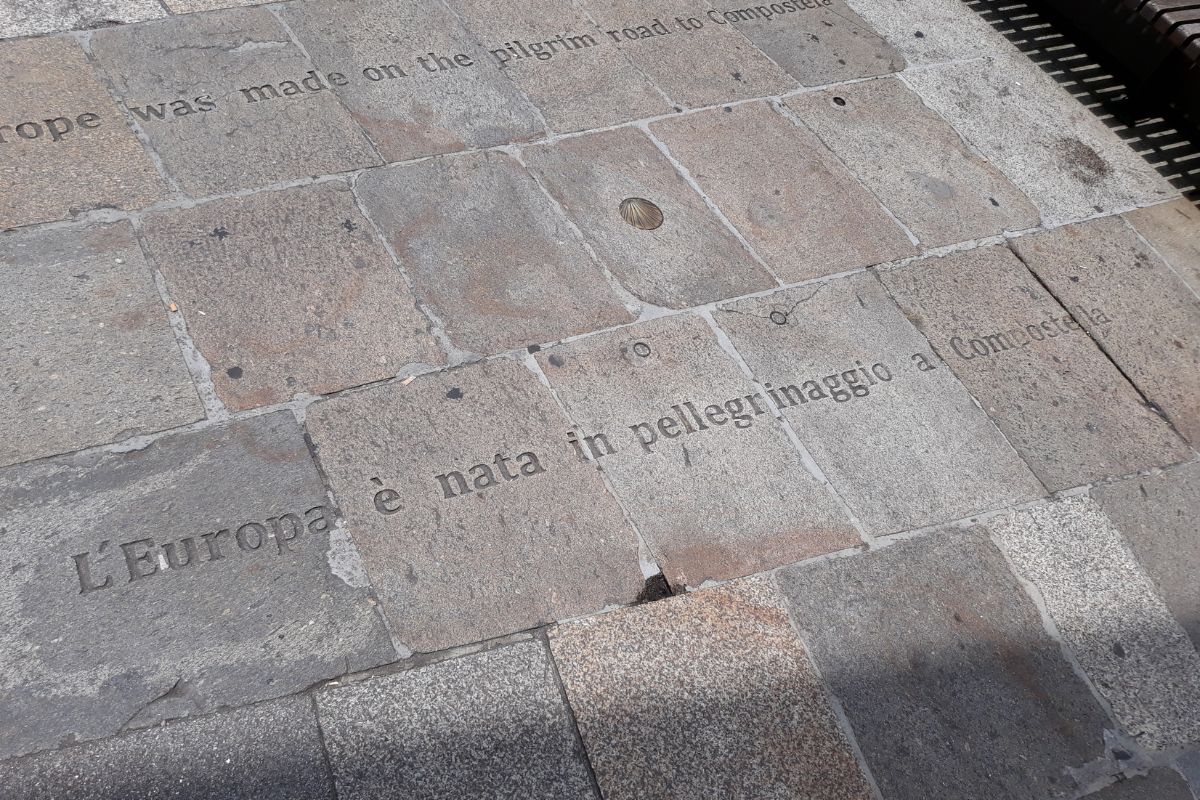
Inscription of a quote attributed to Goethe about the Camino de Santiago
Why do the Camino de Santiago?
Doing the Camino can mean many things, depending on each pilgrim’s perspective. For some, it is a way to find inner peace, for others, a way to connect with nature, or an opportunity to meet people from all over the world.
Motivations for doing the Camino de Santiago
The reasons for doing the Camino are diverse and very personal. Some of the most common motivations include:
- Religious and spiritual search: The Camino is a pilgrimage, and many undertake it with a religious or spiritual purpose, seeking answers, serenity, or a deeper connection with their faith.
- Personal growth: The physical and mental challenge the Camino represents is a way to test one’s limits and discover a new capacity for resilience.
- Disconnecting from the routine: For many, the Camino is an opportunity to escape daily stress and reconnect with oneself and nature.
- Social connection: Walking the Camino allows one to meet people from around the world, creating a support network and friendships along the way.
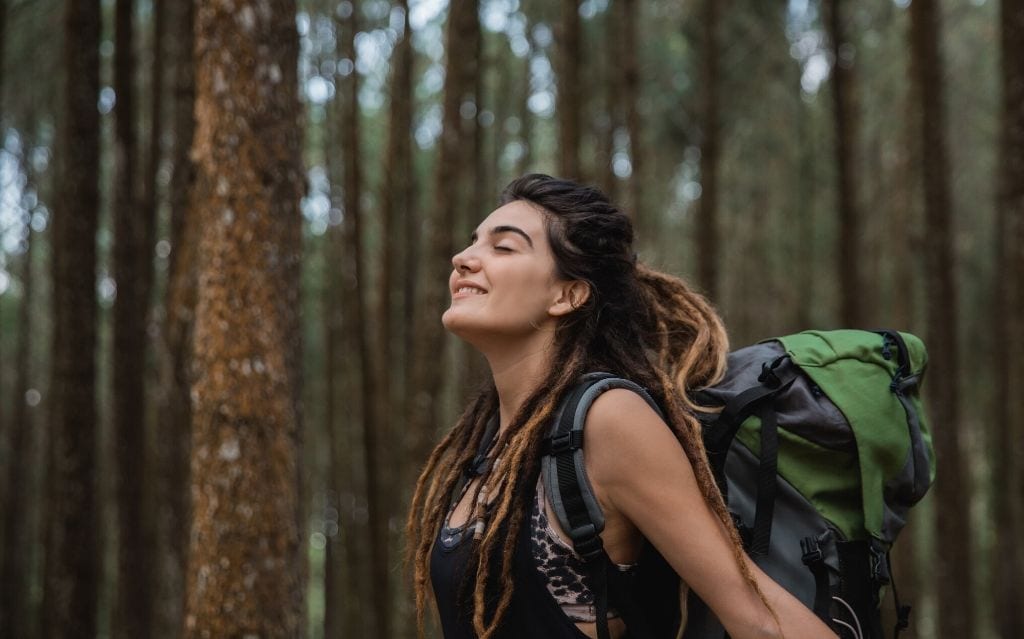
What the Camino can give you goes beyond the physical
Benefits of doing the Camino de Santiago
The Camino de Santiago offers a series of physical and spiritual benefits that go beyond the experience of walking long distances. Some of the main benefits include:
- Physical and mental health: Constant exercise improves cardiovascular health, muscle strength, and endurance. Additionally, the contact with nature and disconnection from daily stress has very positive effects on mental health.
- Reflection and self-knowledge: The time of introspection spent walking alone or in small groups provides an ideal space for reflecting on life and personal goals.
- Sense of accomplishment: Completing the Camino is a challenge that offers a profound sense of satisfaction and personal achievement.
- Culture and history: The Camino allows you to explore various towns and cities full of history, medieval architecture, and traditions, which greatly enriches the experience.
Routes of the Camino de Santiago: Where does the Camino start?
The Camino de Santiago has different Jacobean routes that cross Spain and other European countries, each with its own charm, duration, and level of difficulty. Here are some of the most popular routes with their various starting points.
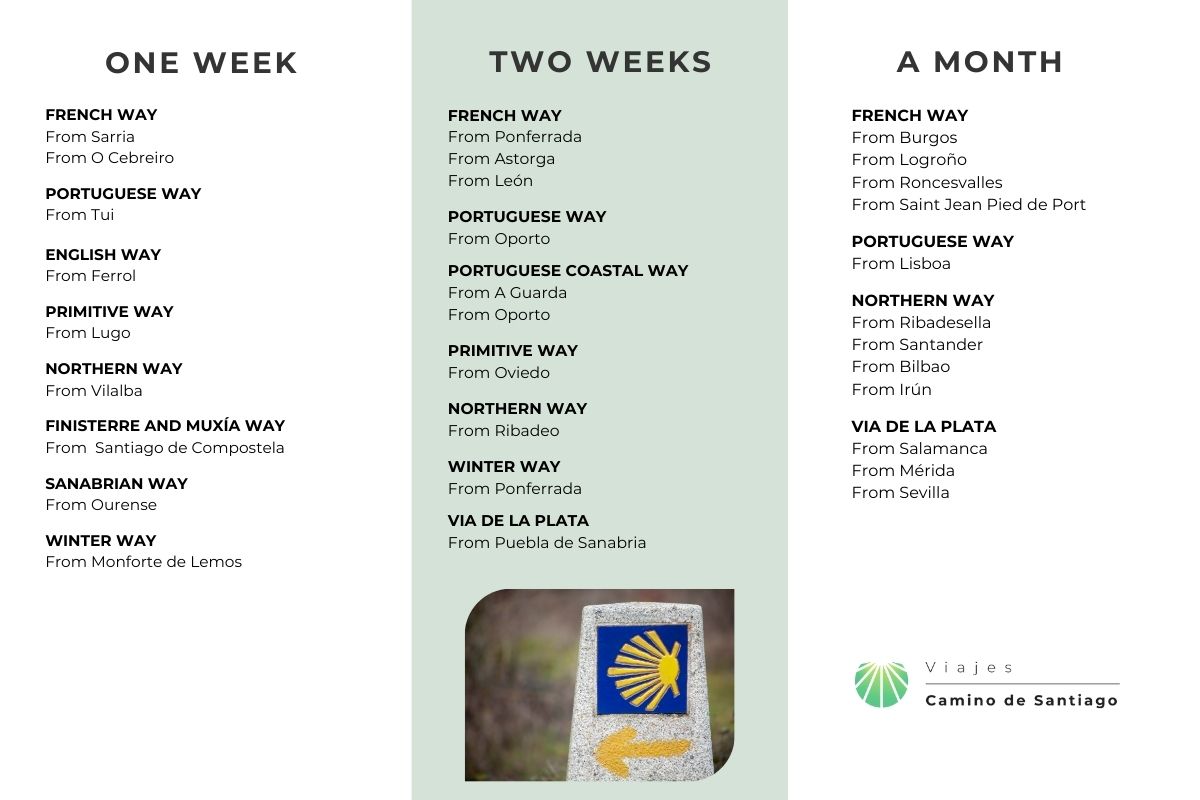
Routes of the Camino de Santiago by duration
The French Way
It is the most well-known and traveled route, with over 700 kilometers crossing the north of Spain, from Roncesvalles to Santiago de Compostela. The French Way, with around 33 stages, is a perfect route for those looking for a complete experience, with diverse stages, stunning landscapes, and rich history.
The Portuguese Way
This route starts in Lisbon and crosses northern Portugal to reach Santiago. The Portuguese Way, with over 600 km and 26 stages, is one of the smoothest routes in terms of physical difficulty and is ideal for those who want a more peaceful experience with a mix of Portuguese and Spanish culture.
The Portuguese Way by the Coast
The Portuguese Way by the Coast is an official coastal variant of the Portuguese Way that begins in Oporto and follows the Atlantic coast, passing through beautiful fishing villages and beaches of the region. With over 250 km and 12 stages, this route is ideal for those who enjoy maritime landscapes and want a more relaxed experience but with the same cultural and spiritual background that the Portuguese Way offers.
The English Way
The English Way begins in the city of A Coruña, which is about 76 km away, or from Ferrol, which with about 114 km in 5 stages is the preferred option for most pilgrims. It is a short route in total length, offering the opportunity to complete a full journey in a few days. It also offers a less crowded path, ideal for those seeking a more peaceful experience.
The Northern Way
This route follows the northern coast of Spain from Irún, with spectacular views of the Cantabrian Sea across more than 800 km in 34 stages. The Northern Way is a more demanding route due to its mountainous terrain, but offers stunning natural landscapes both inland and along the coast.
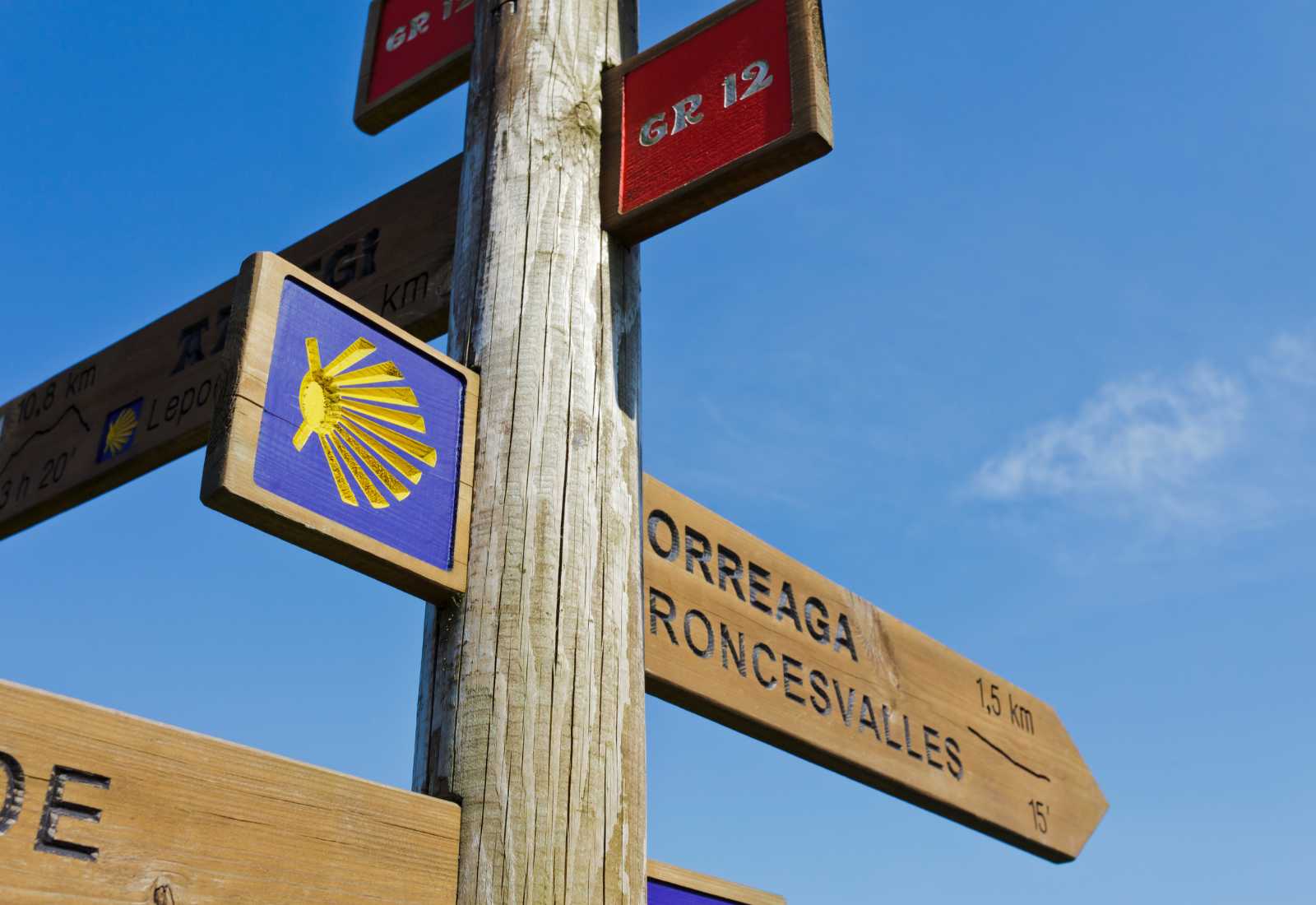
EL Camino Francés desde Roncesvalles es una ruta muy popular entre los peregrinos
The Primitive Way
It is the original route of the Camino de Santiago, starting in Oviedo and crossing mountainous areas and picturesque fields during its 320 km in 14 stages. The Primitive Way is ideal for those looking for a more solitary experience and contact with nature. Additionally, it is one of the most demanding routes.
The Way of Finisterre and Muxía
The Way of Finisterre and Muxía is considered the “epilogue” of the Camino, as it is done after arriving at Santiago de Compostela, starting from there. This route leads to Finisterre and Muxía through 120 km in 5 stages, to the “end of the world” on the Atlantic coast or Costa da Morte, where it is believed that pilgrims complete their spiritual journey. It is a shorter route but very symbolic, with stunning landscapes and the opportunity to reflect after the Camino experience.
The Silver Way
The Silver Way is the longest route of the Camino de Santiago, starting in Sevilla and crossing the western part of Spain through about 1000 km and 36 stages. This path, which follows ancient Roman roads, is ideal for those seeking a long and challenging adventure. The route is quite varied in landscapes, from plains to mountains, and passes through several regions of great beauty and cultural richness. Its particularity is that it can continue on the French Way from Astorga or the Sanabrés Way from the province of Zamora; depending on where you want to continue to Santiago de Compostela, the total distance and duration of the journey may vary significantly.
The Sanabrés Way
The Sanabrés Way is one of the routes connecting the Silver Way to the French Way. It starts in the province of Zamora and heads into the northwest of Spain, passing through beautiful natural landscapes and small towns. With its 16 stages and over 360 km, it is a less-traveled route, making it ideal for those seeking a more peaceful experience and connection with nature.
The Winter Way
The Winter Way is an alternative route to the French Way, passing through the Galician mountains, avoiding the Pyrenees and the most difficult stretches. This route, which starts in Ponferrada, is less known, but with its 10 stages and 200 km, it offers a unique experience by crossing rural villages and mountainous landscapes, ideal for those seeking a quieter and less crowded route.
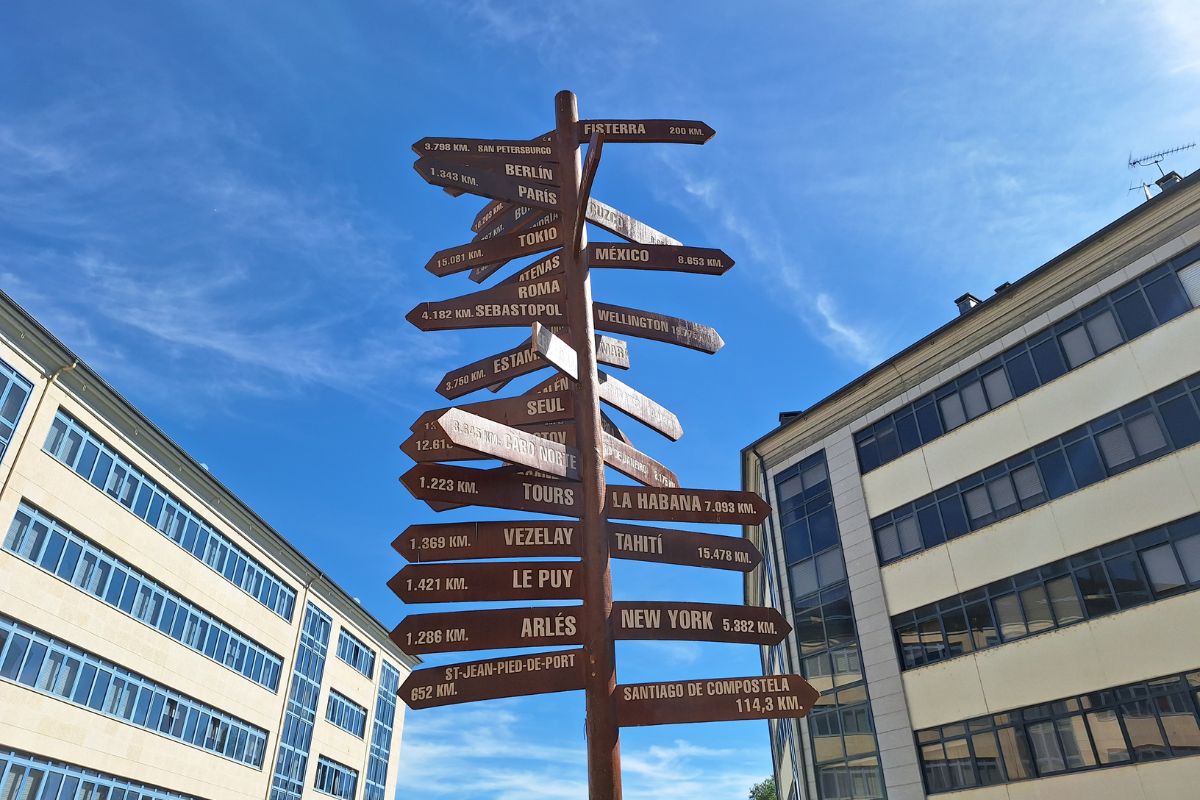
It is said that “there are as many paths as there are origins of pilgrims”
How to do the Camino de Santiago
If you decide to embark on this adventure, good planning is essential to make the most of your experience and know how to do the Camino.
Prior planning
The first thing is to decide when you want to do the Camino. Of all the times to do the Camino de Santiago, summer is the most popular, but also the busiest. Spring and autumn are quieter and have more pleasant temperatures.
The number of days to complete the Camino depends on the route and stages you choose. For example, the French Way or the Portuguese Way can take between 30 and 40 days if you walk the entire route. However, many pilgrims decide to only do part of the journey, such as the last 100 km of an official route. In fact, the most popular are the French Way from Sarria or the Portuguese Way from Tui.
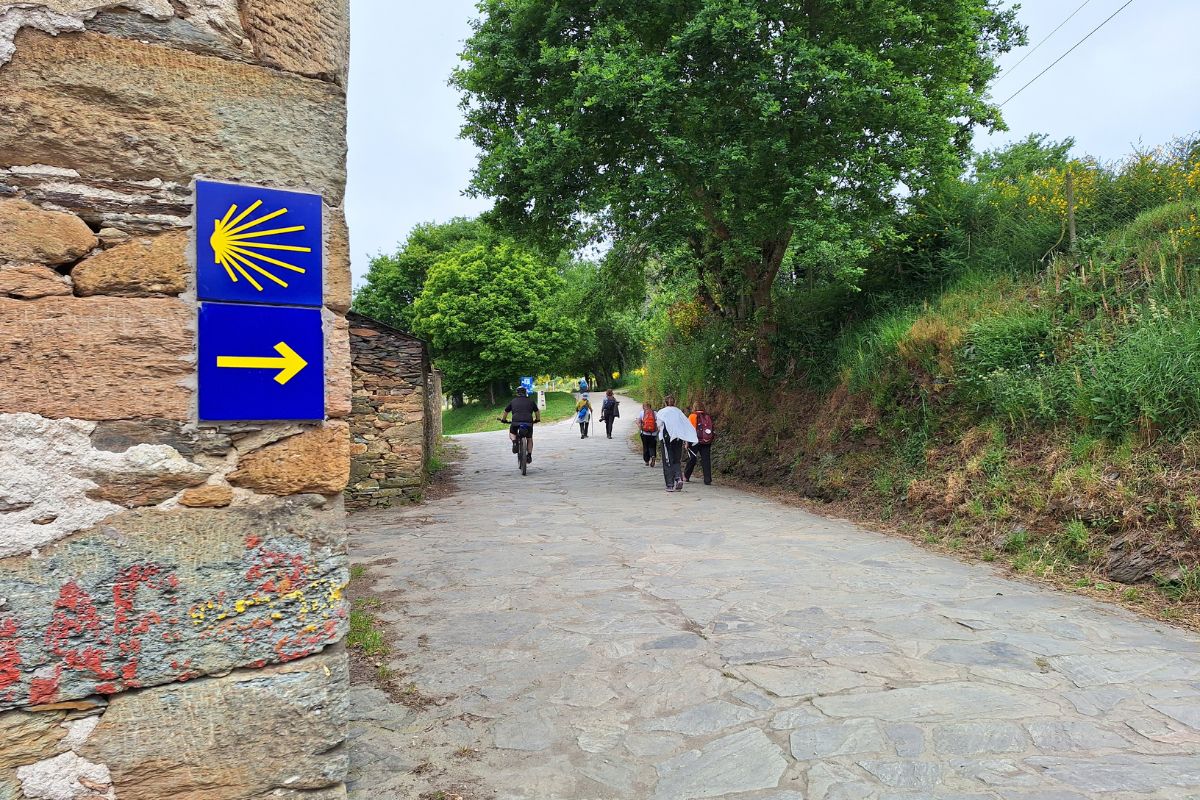
Escoge tu Camino y síguelo
Physical, mental preparation, and gear
It is important to prepare both physically and mentally. The Camino involves walking long distances every day, so it is advisable to train in advance. Go for walks and do some hiking before your trip, and carry a backpack with the approximate weight you plan to carry along the way.
As for the necessary gear, you will need comfortable clothing, proper footwear (boots or trekking shoes), and a lightweight backpack with the essentials (clothes, sleeping bag, sun protection, etc.).
How to get there
How to get to the starting point depends on the route and the starting point chosen: Sarria on the French Way, Tui on the Portuguese Way, etc… These, as well as other Camino de Santiago routes, have good public transport connections. Here are these and other popular starting points:
- How to get to Sarria
- How to get to Tui
- How to get to O Cebreiro
- How to get to Roncesvalles
- How to get to Ferrol
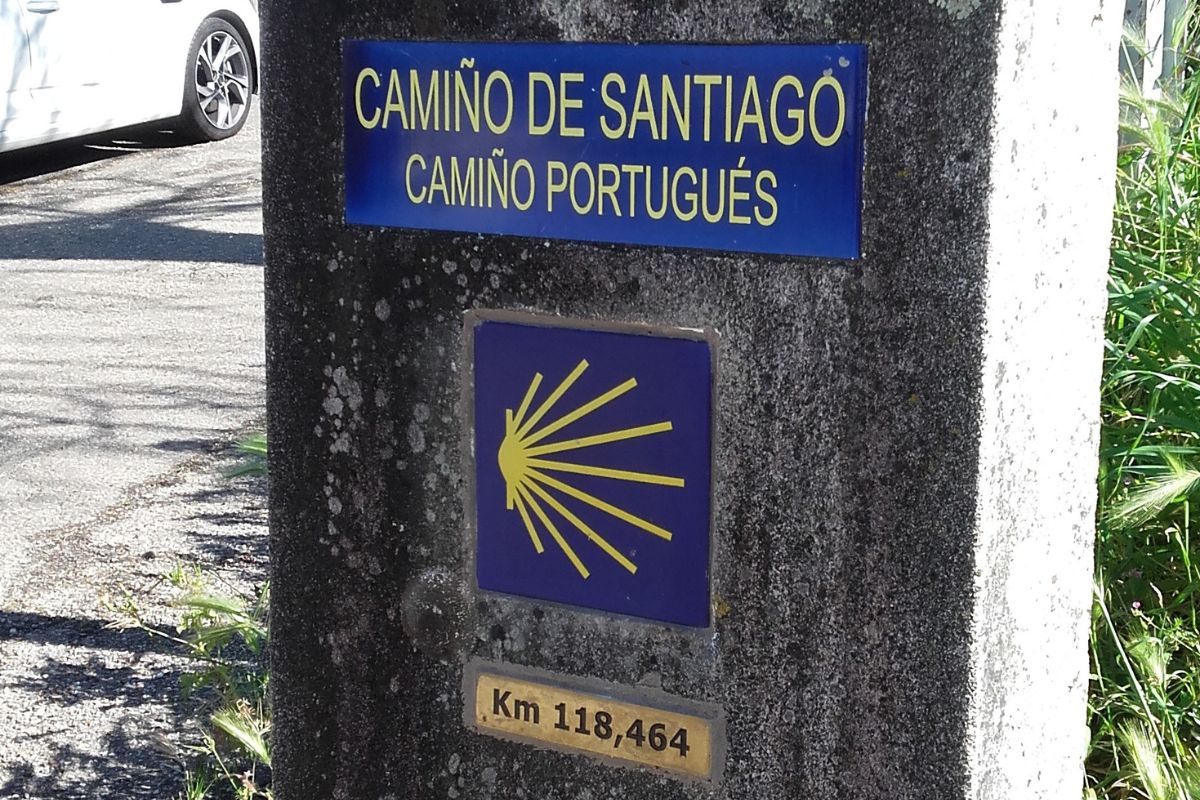
No olvides fotografiar tu inicio de Camino, como esta señalización en Tui
Ways to do the Camino
The Camino de Santiago can be done in various ways, adapting to the preferences and needs of each pilgrim. Whether seeking an introspective experience, enjoying the company of loved ones, or sharing the experience with a group, there are many ways to live this unique adventure. If you don’t know how to do the Camino de Santiago, below we present some of the main ways to do the Camino, so you can choose the one that best suits your style and what you are looking for in your pilgrimage.
- Doing the Camino alone: Doing the Camino solo is one of the most profound and transformative experiences. It allows you to enjoy solitude, reflect on your life, and connect with yourself while crossing beautiful landscapes. Although it can be challenging, the freedom of walking at your own pace and the opportunity to meet new pilgrims along the way make this option very special.
- Doing the Camino with friends: Doing the Camino with friends is an excellent way to share this unique experience. Together, you can support each other, enjoy moments of conversation, and live adventures that will further strengthen your relationship. It is a perfect way to combine fun, exercise, and spirituality in a journey that becomes a shared memory for life.
- Doing the Camino with family: The Camino de Santiago with family is an ideal option for those who want to share this experience with their loved ones. Whether with children or adults, walking together helps strengthen family bonds and enjoy the nature, history, and culture of the Camino. It is also a great way to teach younger ones the values of perseverance and coexistence.

¿Cómo quieres hacer el Camino? ¿Solo o en compañía?
- Doing the Camino in an organized group: If you prefer not to worry about logistics, doing the Camino in an organized group can be the perfect option. This modality is ideal for those who prefer to walk in a group and have everything organized in advance, enjoying the company and the community atmosphere.
- Doing the Camino by bike: For cycling enthusiasts, doing the Camino by bike is a different and exciting way to travel it. The Camino by bike allows you to cover greater distances in less time, giving you the opportunity to explore more of the landscape and enjoy the freedom of cycling on impressive routes. However, it is an option that requires a good physical level due to the slopes and distances.
- Doing the Camino with a dog: More and more pilgrims choose to do the Camino accompanied by their pets, especially dogs. This option is perfect for those who consider their dog part of the family and want to share the experience with them. If you decide to do the Camino with your dog, it is important to choose routes that are suitable for them and ensure that your furry companion is well-trained for long walks. Additionally, there are hostels and services that accept dogs, making the trip planning easier.
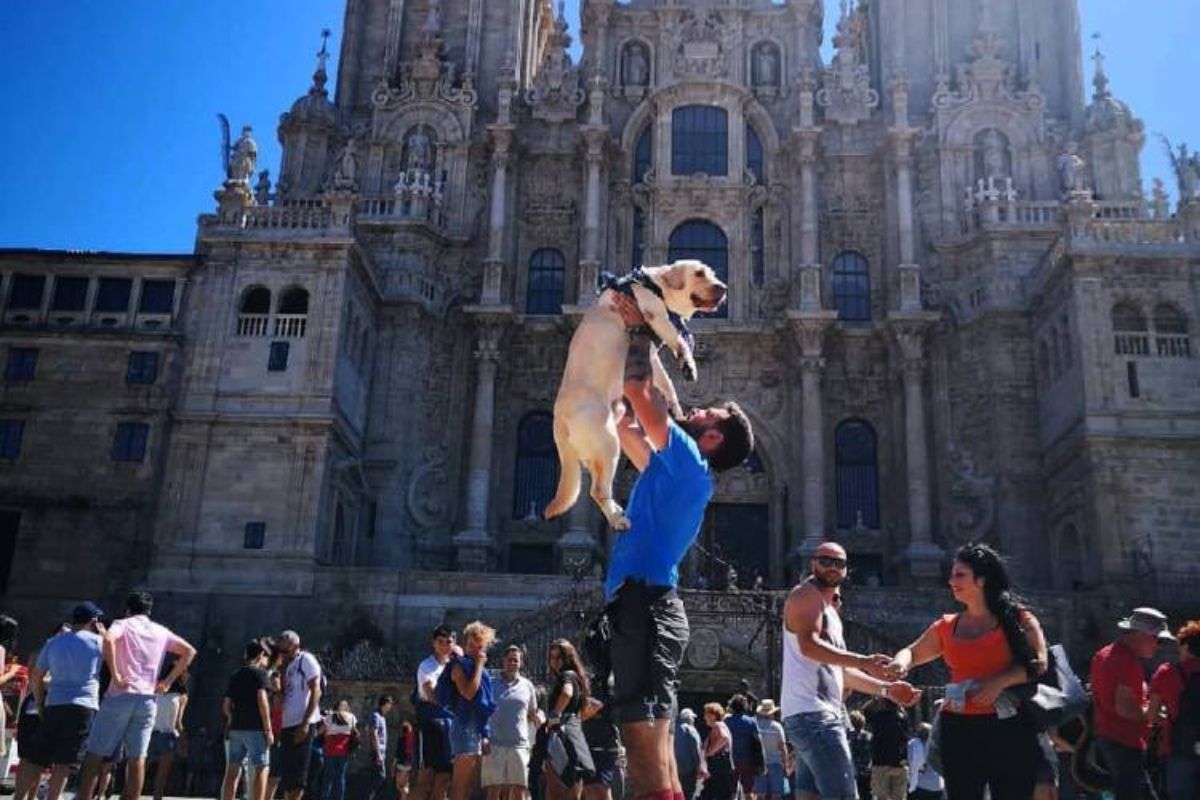
No matter how you do it, the Camino will be the journey of your life
The Pilgrim Credential and the Compostela
The Pilgrim Credential is an essential document for anyone undertaking the Camino de Santiago and identifies you as a pilgrim. It can be obtained at churches, tourist offices, and many other places, and in our trips, we always include it so that you don’t have to worry about getting your Credential.
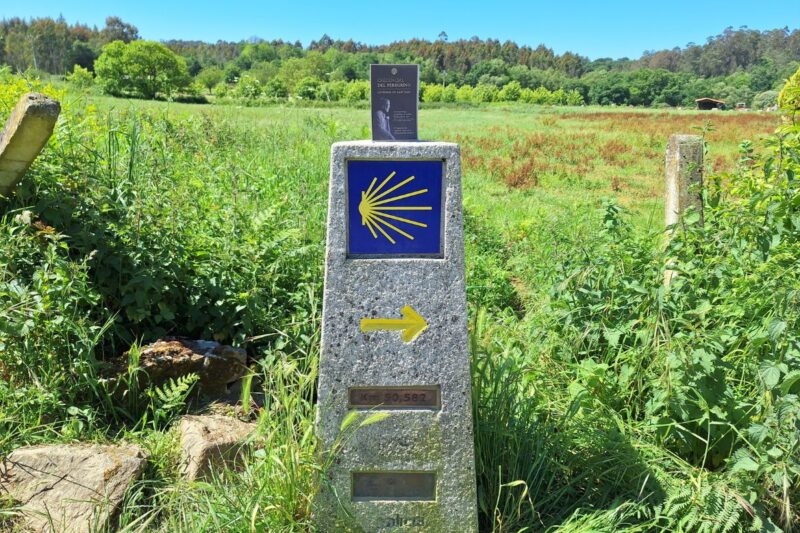
Don’t forget your Pilgrim’s Credential if you’re going to do the Camino de Santiago
As you progress, you need to stamp your Credential in the different towns you pass through, either in churches, tourist offices, accommodations, bars, etc… Remember! You must stamp it at least twice a day and add the date. Then, upon arrival in Santiago, if you have completed at least 100 km on foot or 200 km by bike, you can request the Compostela, a certificate that recognizes your effort and acknowledges you as a pilgrim.
Signage on the Camino de Santiago
The Camino is perfectly signposted with yellow arrows and shells, symbols of the Camino de Santiago that indicate the path to follow. The signage is clear and abundant, making it very difficult to get lost. There are also milestones, markers, signposts, traffic signs, and informational panels at the main points of the route. Additionally, if you think it’s necessary, you can always rely on GPS tracks or apps for the Camino de Santiago.
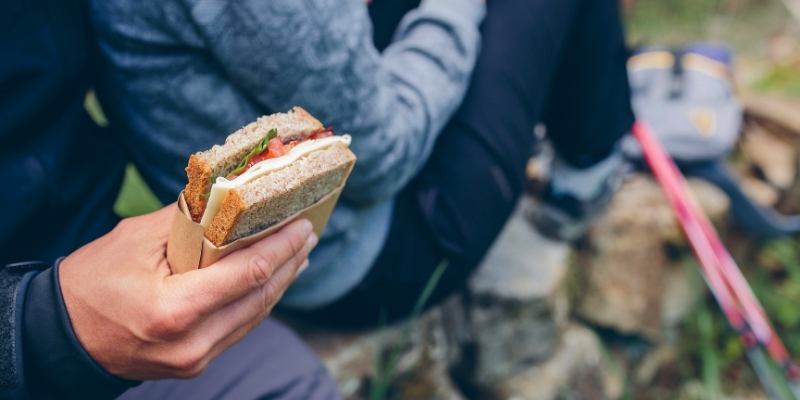
Eat well during your pilgrim adventure
Services and gastronomy on the Camino de Santiago
Along the Camino, you’ll find a wide variety of services that make pilgrims’ lives easier: accommodations, restaurants, grocery stores, pharmacies, etc. Good nutrition during the Camino is an important part of the experience: you should carry some snacks in your backpack during the stage and eat well at the end of it to replenish your energy.
In each region, you can try local dishes that reflect the local culture, and the Camino’s gastronomy is rich and tasty. There are even options for all tastes and needs, such as vegetarian or gluten-free menus.
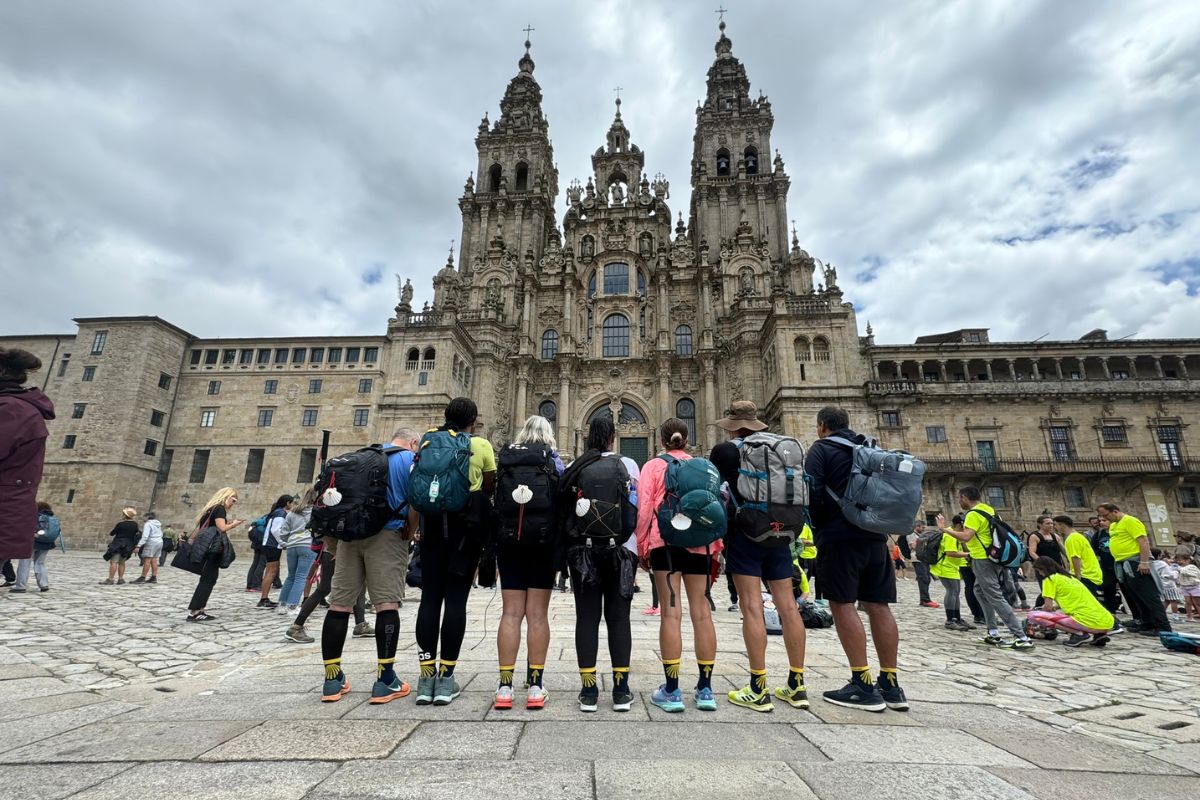
The arrival at the Santiago Cathedral is indescribable
If you’re looking for a transformative experience, the Camino de Santiago is the perfect adventure for you. No matter the reason you decide to do it, every step on the Camino is an opportunity to discover yourself, connect with others, and live a unique experience.
We would love to accompany you on your pilgrimage! If you need more information or wish to plan your next Camino de Santiago, don’t hesitate to contact us. We are here to help with everything you need, so that your Camino is an unforgettable experience.

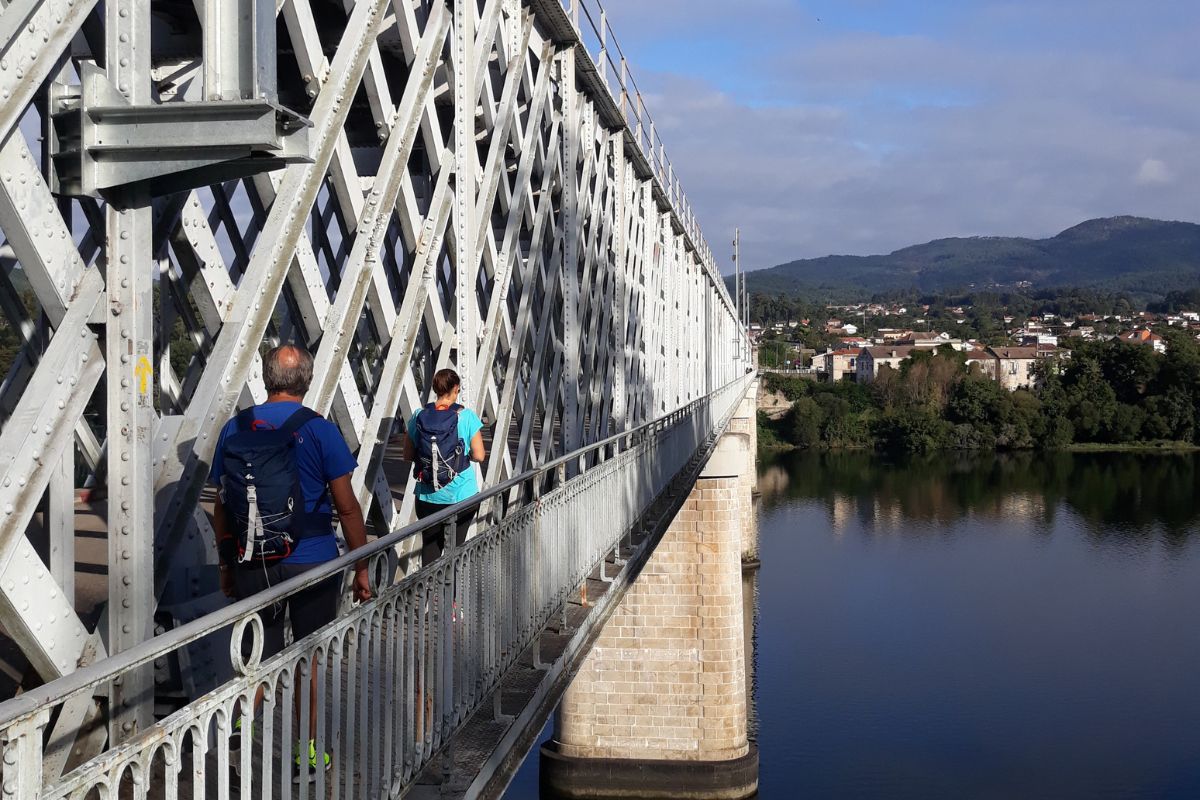










Leave A Comment